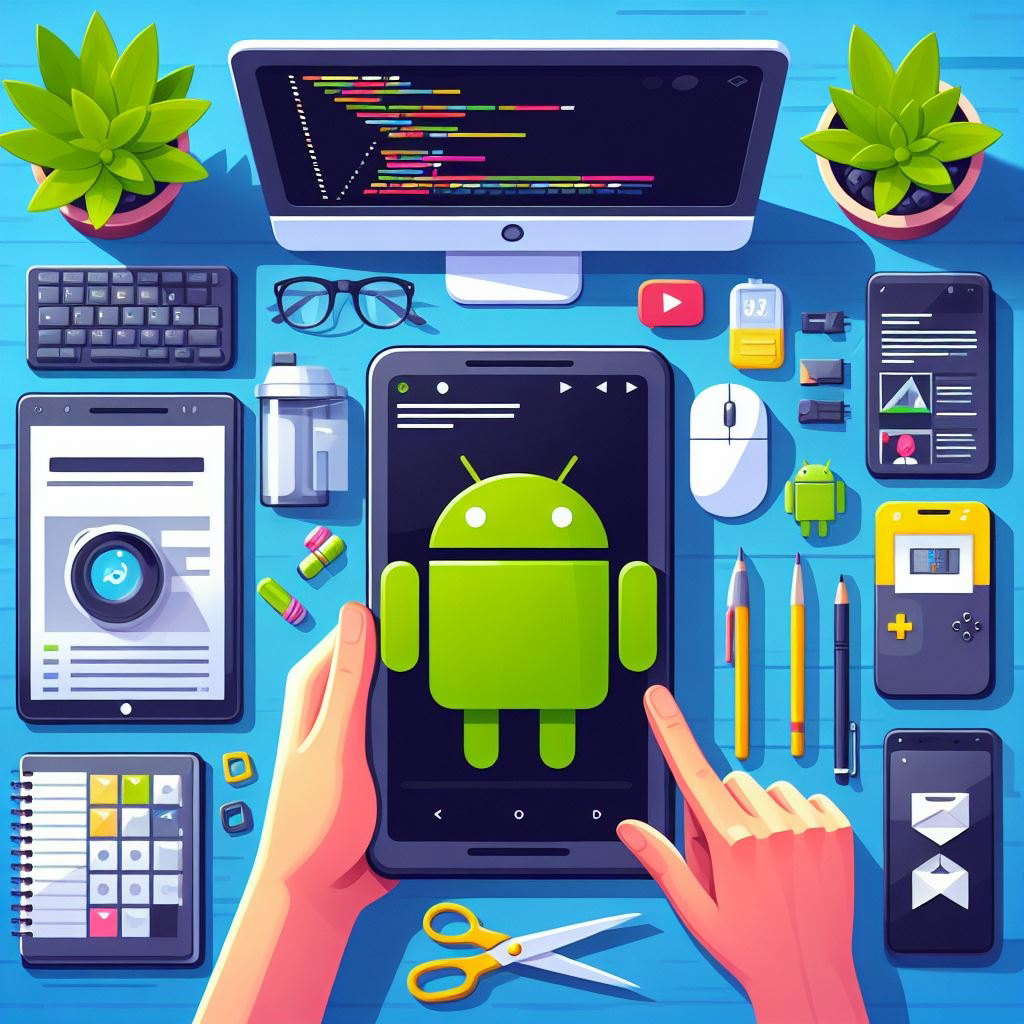How to create an Android app, you can follow these steps:
Define your app idea and functionality: Determine the purpose and features of your app. Consider the target audience and the problem your app will solve.
Sketch out the app's user interface (UI): Create rough wireframes or sketches of how you want your app to look and function. This helps in visualizing the app's structure.
Design the UI: Use design tools like Sketch, Adobe XD, or Figma to create a polished UI for your app. Consider user experience (UX) principles, such as intuitive navigation and visually appealing elements.
Set up your development environment: Install Android Studio, the official integrated development environment (IDE) for Android app development. It provides tools, libraries, and an emulator to test your app.
Write the code: Android apps are typically developed using Java or Kotlin. Use Android Studio to write the code for your app, implementing the desired functionality.
Test your app: Use the Android emulator or connect a physical device to test your app. Fix any bugs or issues that arise during testing.
Publish your app: Create a developer account on the Google Play Store, follow the submission guidelines, and upload your app. Prepare necessary assets like app icons, descriptions, and screenshots.
For iOS app development, the process is as follows:
Refine your app idea and functionality: Similar to Android app development, start by defining your app's purpose and features.
Create UI wireframes: Use design tools like Sketch, Figma, or Adobe XD to create wireframes for your app's user interface.
Design the UI: Use the chosen design tool to create a visually appealing and user-friendly UI for your iOS app. Consider iOS design guidelines to ensure consistency with the platform.
Set up your development environment: Install Xcode, the official IDE for iOS app development. It includes a simulator for testing your app on various iOS devices.
Write the code: iOS apps are typically developed using Swift or Objective-C. Use Xcode to write the code, implementing the desired functionality.
Test your app: Use the iOS simulator or connect a physical iOS device for testing. Ensure that your app works smoothly and fix any bugs or issues.
Publish your app: Create an Apple Developer account, follow the App Store submission guidelines, and upload your app. Prepare necessary assets like app icons, descriptions, and screenshots.
Remember, app development requires proficiency in programming languages, familiarity with development tools, and understanding of the respective platform's guidelines. If you don't have the necessary skills, you may consider hiring a professional app developer or learning app development yourself through online tutorials and courses.

Comments
Post a Comment